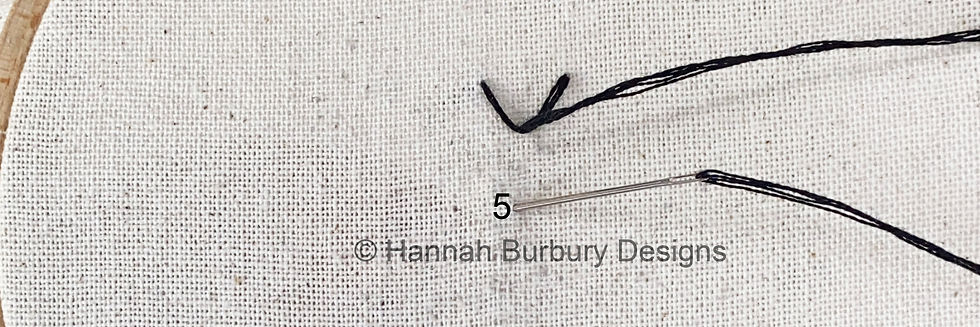Stitchtember - Day 10 - Fly Stitch
- Hannah Burbury
- Sep 10, 2023
- 2 min read
Fly stitch is a lovely decorative stitch and is very versatile too. The stitch creates a 'Y' shape and can be worked individually or in straight lines. Change the look of the stitch by varying the width and length.

Fly stitch tutorial
Materials:
· Fabric – cotton or linen fabric works well. I used osnaburg fabric which is 100% seeded cotton, but you can use any spare fabric you already have.
· Stranded embroidery thread
· Needle
· Scissors
Optional:
· Embroidery hoop
For your reference, during this tutorial I am using osnaburg 100% cotton seeded fabric, black DMC stranded cotton embroidery thread, a hand embroidery needle and a 5” DMC beechwood embroidery hoop.
1. Thread your needle using stranded embroidery thread. For this tutorial I start by using four strands of DMC stranded embroidery thread. You can choose how many strands of embroidery thread you would like to work with. The number of threads will determine the size of your French knot.
2. Bring your needle through from the back of the fabric to the front at point 1. This is the starting point of your fly stitch.

2. Put your needle back into the fabric at point 2 and back up at point 3.

3. Slide the thread under your needle.

4. Pull your needle through the fabric to form a 'V' shaped stitch.

5. Put your needle into point 4 to form a small anchor stitch.

6. Your fly stitch is complete.

7. Continue working a few more fly stitches to practice the stitch.

8. To work a continuous line of fly stitches, start by working a single fly stitch. Then, instead of working a small anchor stitch, insert your needle into point 5 to form a long stitch.


9. Bring your needle up at point 6, in line with the start of your first stitch.

10. Insert your needle in at point 7 and back up at point 8, the end of the vertical stitch, and slide the thread under your needle.

11. Pull the needle through the fabric to form the stitch.

12. Insert your needle into point 9, ensuring the stitch is roughly the same length as your previous vertical stitch.

13. Pull the needle through the fabric until the stitch is secure.

14. Continue working your stitches until you reach the end of your fly stitches.

15. Insert your needle at point 10 to secure your last fly stitch with a small anchor stitch.

16. Your fly stitches are complete.

Fly stitch top tips:
Vary the width and length of your fly stitch to create different looks
Try stitching horizontal and vertical lines of fly stitches
Vary the number of threads when working the fly stitch to create different effects

Fly Stitch Video Tutorial
Happy Stitching!
Hannah x




Comments